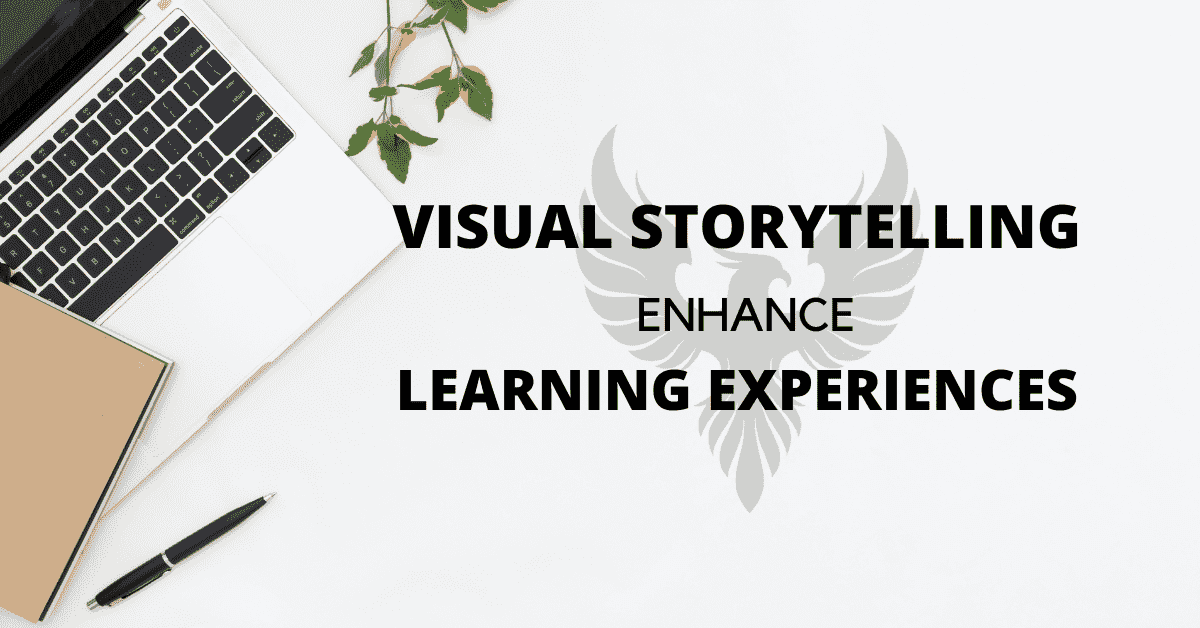Visual storytelling has emerged as a transformative pressure in schooling, reshaping how know-how is imparted and absorbed. This dynamic method enriches studying experiences across diverse domain names of online course creators. From conventional textbooks to interactive multimedia shows, visible storytelling has revolutionized the way students engage with data. By incorporating captivating visuals, which include infographics and videos, educators can efficaciously speak complex ideas and foster a piece of deeper information among beginners. As generation continues to boost, the potential for innovative visual storytelling strategies in schooling is boundless.
What is visual storytelling?
Visual storytelling is a powerful and engaging method of conveying information, ideas, or narratives using visual elements such as images, videos, graphics, and animations. In the context of online course creators, visual storytelling plays a crucial role in enhancing the learning experience and effectively communicating course content. Here’s a closer look at the concept of visual storytelling and its relevance to online course creation.
1. Enhancing Engagement: Visual storytelling captures learners’ attention and keeps them engaged throughout the course giving an upper hand to the online course creators. Compelling visuals break the monotony of text-based content and make learning more enjoyable.
2. Fostering Retention: Studies show that people remember visual information better than text. By incorporating visual storytelling elements, course creators can enhance knowledge retention among learners.
3. Simplifying Complex Concepts: Online course creators can make difficult concepts look easy and more accessible through visual aids. Infographics, diagrams, and flowcharts help learners grasp intricate topics with ease.
4. Emotional Connection: Visuals can evoke emotions and create a more profound connection with the content. Through carefully chosen images or videos, course creators can establish an emotional link between the learner and the subject matter.
5. Storytelling Narratives: Online courses often benefit from a structured narrative that guides learners through the learning journey. Visual storytelling can help weave a compelling narrative, making the course content more relatable and memorable.
Visual storytelling is an indispensable tool for online course creators. It not only enhances engagement and retention but also simplifies complex concepts, fosters emotional connections, and accommodates diverse learning styles. By incorporating visuals strategically into their courses, creators can provide an enriching and impactful learning experience that resonates with learners and helps them achieve their educational goals.
Technology and Strategies Used By Online Course Creators:
- Neuroscience Insights: Understanding the cognitive methods in the back of visible getting to know is important. Research suggests that visuals engage a couple of regions of the brain, improving reminiscence retention and comprehension. Studies show a sizable boom in understanding retention while data is presented visually. This is because visuals stimulate each of the visible cortex and the language processing facilities, permitting inexperienced persons to method information more efficiently. Additionally, visuals can help rookies make connections among ideas and real-world packages, main to a deeper information of the issue matter.

- Pedagogical Strategies: Effective implementation of visual storytelling calls for considerate instructional methods. Techniques like concept mapping, thought mapping and storyboarding facilitate seamless information transfer. These techniques allow rookies to arrange and shape information in a visible layout, making it less complicated to understand complex thoughts and relationships. Furthermore, incorporating visuals into training can also decorate learner engagement and motivation, as they offer a greater interactive and immersive knowledge of the experience.
- Technology Integration: The modern educational era provides a wealth of resources for developing captivating visual content. Interactive shows, simulations, and virtual excursions provide immersive mastering reviews. Embracing such equipment empowers online course creators to elevate their teaching practices. Additionally, instructional apps and online systems permit students to access visible materials every time and everywhere, promoting self-paced studying. These technological tools additionally enable instructors to song students’ progress and provide personalised feedback, enhancing the effectiveness of visible education.
- Accessibility Considerations: Inclusivity is a cornerstone of powerful training. Visual content needs to be designed to house all learners, such as people with disabilities. Incorporating features like alt textual content, captioning, and compatibility with assistive technology ensures time-honored accessibility. These accessibility considerations do not only work as the best help for college students with disabilities but also create a more inclusive knowledge of the environment for all learners. By incorporating these capabilities, visible content material becomes extra accessible and can be without problems understood and engaged with employing a much wider range of students. Additionally, providing widespread accessibility of such tools by online course creators promotes equal opportunities for all students to get the right of entry to and benefit from visible preparation.
- Cultural and Linguistic Diversity: Visual storytelling transcends language limitations, making it an invaluable tool in culturally diverse knowledge of environments. Thoughtfully designed visuals can deliver ideas universally, fostering a sense of belonging for rookies from various backgrounds. In addition, visible storytelling can also assist college students who are getting to know a second language higher understanding and connecting to the content. By the use of images and pictures, language obstacles may be triumph over, permitting students to comprehend complicated thoughts and ideas more without difficulty. This not best complements their studying experience but also encourages inclusivity and admiration for specific cultures and languages inside the school room.
- Ethical Use of Visuals: Maintaining moral standards in visible content introduction is paramount for online course creators. Providing proper attribution, ensuring usage rights, and adhering to copyright legal guidelines safeguard the integrity and legality of visible substances. Furthermore, the moral use of visuals promotes an experience of fairness and integrity in educational settings. It also fosters a tradition of respect for the authentic creators and their intellectual assets rights. By upholding these moral standards, educators can set a wonderful instance for college kids and instill in them the significance of responsible and respectful use of visual materials.
- Assessment and evaluation: Measuring the effect of visual storytelling is important for optimizing its effectiveness. Establishing remarks mechanisms and assessment strategies lets educators gauge learner engagement and investigate comprehension degrees. These evaluation and evaluation strategies also can assist educators in picking out regions where students can also need extra guidance or rationalization. Additionally, by way of frequently comparing the effect of visual storytelling, educators could make informed choices approximately the forms of visible materials that might be only for his or her students and regulate their coaching techniques.
- Future Trends and Innovations: The integration of emerging technologies like digital fact and augmented truth holds big promise for visible storytelling in education, especially for online course creators. These improvements are poised to revolutionize the getting-to-know experience, imparting exceptional levels of interactivity and immersion. With virtual fact, students can step into historic activities or discover remote places, bringing their getting to know to existence in a way that was previously unattainable. Augmented truth, then again, lets students overlay digital facts onto the actual international, improving their knowledge of complicated standards and making summary thoughts more tangible. As these technologies continue to boost, educators can have even more possibilities to interact with and encourage their college students through visual storytelling.
- Collaborative Learning through Visuals: Visuals are powerful equipment for encouraging collaboration among beginners. Group tasks, displays, and interactive visual assignments foster a sense of network and shared studying goals. By running collectively on visible tasks, students can alternate ideas, views, and information, leading to deeper know-how of the situation. Additionally, visible assignments permit unique getting-to-know patterns to be accommodated, ensuring that every college student can actively take part and contribute to gaining knowledge of the procedure.
Harnessing the Power of Visual Storytelling in Education for Online Course Creators
In today’s digital age, online course creators are continually seeking innovative ways to engage learners and enhance the educational experience. One such innovation that has gained tremendous traction is the use of visual storytelling. This approach leverages the power of visuals, narratives, and multimedia elements to communicate information effectively and make learning more engaging and memorable. Here’s how visual storytelling can be included in the education sector, with a focus on online course creators.

1. Engaging Course Introductions:
Online course creators can use visual storytelling to craft captivating course introductions. By incorporating video clips, animations, or visually appealing graphics, educators can set the tone for the course and pique learners’ curiosity. This initial engagement can be instrumental in retaining learners’ interest throughout the course.
2. Animated Explainers:
Complex concepts are often challenging to explain through text alone. Visual storytelling comes to the rescue by enabling the creation of animated explainers. These short, animated videos simplify intricate subjects, making them more accessible and engaging for learners. Tools like whiteboard animations or motion graphics can be employed to bring concepts to life.
3. Interactive Infographics:
Online course creators can utilize interactive infographics to convey data, statistics, or processes visually. Infographics are highly effective in summarizing information and making it digestible. Learners can interact with these graphics to explore content at their own pace, promoting self-directed learning.
4. Story-Based Learning Modules:
Structured narratives can be incorporated into online courses to create story-based learning modules. These narratives can follow a storyline that aligns with the course objectives. Learners can relate to characters and scenarios, which enhances comprehension and retention of course material.
5. Video Lectures and Demonstrations:
Instead of traditional text-based lectures, educators can use video lectures and demonstrations. Visual storytelling through video allows instructors to connect with learners personally, showcase real-world applications, and provide dynamic explanations of complex topics.
6. Gamification Elements:
Gamification elements, such as storytelling within games or simulations, can make learning fun and immersive. Course creators can design interactive scenarios that require learners to make decisions and solve problems within a narrative framework, enhancing engagement and critical thinking.
7. Visual Assessment Tools:
Visual storytelling can extend to assessment methods. Online quizzes or assignments can include visual components, such as asking learners to create concept maps, diagrams, or multimedia presentations to demonstrate their understanding of course material.
8. Collaborative Storytelling Projects:
Online courses can incorporate collaborative storytelling projects where learners work together to create narratives related to course content. This fosters teamwork, creativity, and a deeper understanding of the subject matter.
9. Personalized Learning Journeys:
Visual storytelling can be used to tailor the learning experience for individual learners. Through personalized dashboards or learner profiles, educators can provide customized content recommendations, progress tracking, and achievements, enhancing learner motivation and engagement.
10. Social Learning Platforms:
Online course creators can build social learning platforms where learners can share their experiences and insights through visual storytelling. This peer-to-peer interaction enriches the learning community and encourages knowledge exchange.
The incorporation of visual storytelling in the education sector, especially for online course creators, is a transformative approach that can significantly enhance the learning experience. By integrating multimedia elements, narratives, and interactive content, educators can engage learners, simplify complex concepts, and make learning more enjoyable and memorable. In an increasingly digital world, visual storytelling is a powerful tool that enables educators to create dynamic, immersive, and effective online courses that cater to diverse learning styles and needs.
The Last Note:
By embracing these concepts, educators and online direction creators can unencumber the full capacity of visible storytelling, creating richer, greater engaging learning stories for students. These experiences can foster creativity and essential questioning capabilities, as college students are recommended to suppose outdoor the container and gift statistics in particular and visually appealing approaches. Moreover, incorporating visible storytelling into online guides can also make complicated ideas more on hand and easier to realize, as visuals have the electricity to simplify and make clear complicated statistics.
